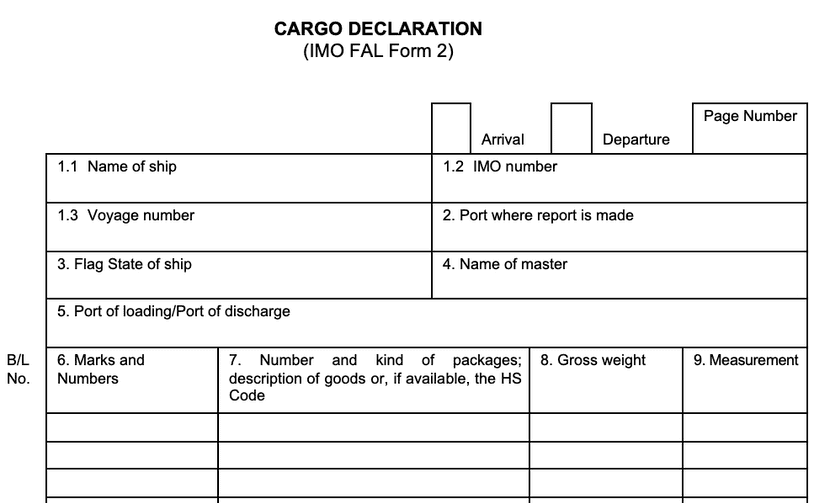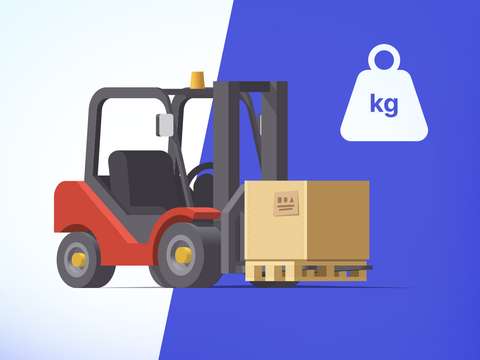Shipping manifests are only used for larger shipments that take place on an international level. However, once the scale of your international operation increases, you may experience the need to move products from your production location to selling points or distribution centers and warehouses that are located in a country where they are not produced. Even if you partner up with other businesses to sell your products or if you receive big orders from abroad, you may need to work with transportation manifests.
Let’s take a look at everything you need to know about manifests, including what they entail, why they’re important, and the types that exist, so you can make your international operations as smooth and incident-free as possible. You’ll also learn how crucial it is to create shipping manifests within shipping management software for eCommerce.

What is a shipping manifest?
Shipping manifests or transportation manifests are necessary documents for the transportation of goods on an international level.
They include:
- A description of the products
- The quantity
- The weight
- The value of each item
- The exporter
- The importer
- The payment method
Manifests are important for both the buyer and the seller, as they protect both sides and include the obligations and rights relevant to the transportation process.
Shipping manifests have many functions and play a massive role in trade. Here’s why:
Why are shipping manifests important?
Shipping manifests are part of the paperwork that needs to be presented during the customs clearance process.

Source: MaritimePage
Moreover, they can be used to verify the content of a shipment, inform the shipping company of what it’s transporting and help solve disputes and claims regarding lost, stolen or damaged items.
Types of transportation manifest
Cargo manifest
A cargo manifest is a list of all the goods present on the vehicle in question (ship, plane, train, etc.). It also includes the type of cargo, the quantity, the destination, the shipper’s name and even the route that the vessel will or has taken.
Freight manifest
A freight manifest isn’t very different from a cargo manifest. It also includes the name of the items, the quantity and weight of each item, the type of item, and the name and address of the consignor and consignee. Additionally, it includes the cost of the shipment, so that it can be used as billing information.
Out-of-gauge manifest
This type of shipping manifest is only generated when the items that are being shipped have dimensions that don’t fit in a shipping container. Although they’re not very common, it’s important to know that out-of-gauge manifests exist. They generally include the same content as a cargo or freight manifest, but with some additional information that the authorities, carriers, buyer and seller may need to ensure safe and timely deliveries.
Reefer manifest
Reefer manifests are generated when the goods are delivered through a cold chain shipment. The information they include is generally the same as with other manifests, but with the addition of the necessary temperature, humidity and other settings that the reefer containers should have.
Hazardous cargo manifest
The hazardous cargo manifest lists all the hazardous materials or goods (HAZMAT) that are being transported on a vehicle. The manifest includes all the general information stipulated in the cargo manifest, with additional information on the hazardous materials, including the materials themselves, how they need to be transported, safety measures, first aid protocols, and procedures in case of an accident.
The hazardous cargo manifest also shows the International Maritime Dangerous Goods (IMDG) codes for the shipped goods, Medical First Aid Guide (MFAG) details, etc.
How to create shipping manifests for eCommerce
Here's a step-by-step overview of how to create a shipping manifest and the key role that specialized shipping documentation software plays in streamlining the process:
Gather shipment details
Begin by collecting all relevant details about the shipment, such as:
- Sender and recipient information (names, addresses, contact details)
- Product descriptions, including SKUs, weight, and quantity
- Tracking numbers, if applicable
- Shipment date and expected delivery date
This data forms the core of the manifest, serving as a record for every item shipped.
Organize and document items
Each item in the shipment should be listed separately on the manifest. Organize them by SKU or product type to make the document easy to read and to help carriers or inspectors quickly verify contents.
Include regulatory information
Shipping internationally often requires additional regulatory information, such as tariff codes, country of origin, and compliance declarations. Including these details can help avoid delays in customs and streamline the clearance process.
Format the manifest for legibility
A well-organized, legible manifest reduces errors and enhances operational efficiency. The manifest should be clear enough to be used by various stakeholders, from warehouse staff to customs officers.
Leverage specialized shipping software
While creating a manifest manually is possible, using a specialized eCommerce platform like Outvio offers significant advantages:
- Automation of Data Entry: Reduces human error by pulling data directly from order management systems and databases, ensuring each manifest is consistent and accurate.
- Regulatory Compliance: Many software solutions include regulatory updates and ensure that required information for international shipping is always included, avoiding delays and fines.
- Real-Time Tracking: Integrated shipment tracking software allow for real-time updates, which can be automatically included in the manifest, helping both sender and recipient stay informed.
- Efficient Document Management: By centralizing and storing all shipping documents, including manifests, software solutions simplify retrieval and auditing processes, essential for compliance and record-keeping.
- Scalability: For businesses handling large shipment volumes, shipping software can process hundreds or thousands of orders, automatically generating accurate manifests as each shipment is processed.
Generate and distribute the manifest
After creating the manifest, share it with relevant parties. This might include warehouse teams, carriers, and recipients. Many software platforms support digital distribution, making it easy to share manifests securely and instantly.
Conclusion
Shipping manifests may not be as commonplace as shipping labels in the retail industry, but once your operations grow, you’re likely to start encountering them — and if you’re already a manufacturer, you’re probably using them already.
This article covered all you need to know about transportation manifests. Normally, as a retailer or exporter, you don’t need to generate these documents yourself, but it’s important to know under what circumstances a manifest is necessary, what it includes, the difference between each type and, generally, how they’re beneficial to you and your business.




